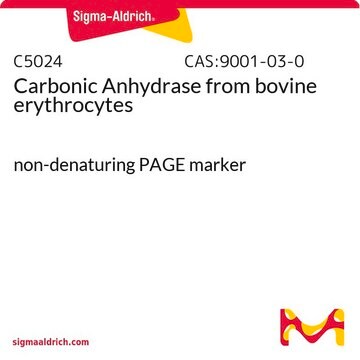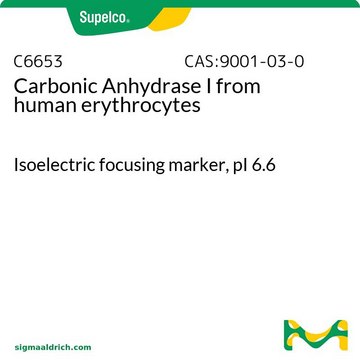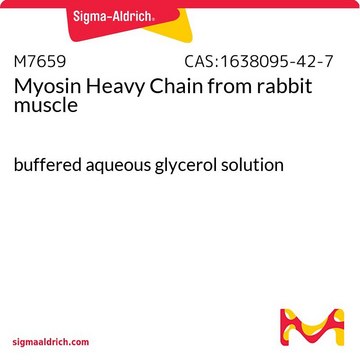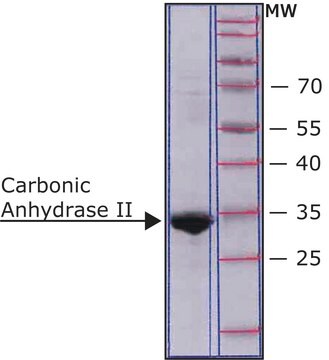C2273
Carbonic Anhydrase from bovine erythrocytes
For use as a marker in SDS-PAGE
Synonym(s):
Carbonate Dehydratase, Carbonate Hydrolyase
About This Item
Recommended Products
biological source
bovine erythrocytes
Quality Level
form
powder
mol wt
~29 kDa
packaging
vial of 5 mg
storage temp.
2-8°C
Looking for similar products? Visit Product Comparison Guide
General description
Application
- as a component of nine-protein mixture for the comparative proteomic mass spectrometry analysis of bovine brain samples
- as a molecular marker in gel filtration chromatography
- as a standard protein to test the recovery of CMA/20 microdialysis probe
Biochem/physiol Actions
Unit Definition
Signal Word
Danger
Hazard Statements
Precautionary Statements
Hazard Classifications
Resp. Sens. 1
Storage Class Code
11 - Combustible Solids
WGK
WGK 3
Flash Point(F)
Not applicable
Flash Point(C)
Not applicable
Personal Protective Equipment
Regulatory Listings
Regulatory Listings are mainly provided for chemical products. Only limited information can be provided here for non-chemical products. No entry means none of the components are listed. It is the user’s obligation to ensure the safe and legal use of the product.
JAN Code
C2273-1VL-KC:
C2273-1VL:
C2273-BULK:
C2273-1VL-PW:
C2273-PH:
C2273-VAR:
C2273PROC:
Choose from one of the most recent versions:
Already Own This Product?
Find documentation for the products that you have recently purchased in the Document Library.
Customers Also Viewed
Our team of scientists has experience in all areas of research including Life Science, Material Science, Chemical Synthesis, Chromatography, Analytical and many others.
Contact Technical Service














